Understanding ingress protection techniques in electrical enclosures
20th February 2013
Source:
Spelsberg els
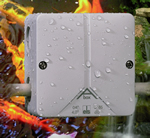
One of the most critical factors in deciding which electrical enclosure or junction box should be used to protect your electrical systems and their connections is its IP rating. No matter where the housing will be located, you need to be sure that it will be able to withstand any hostilities its environment may throw at it. But how many people actually know how these IP ratings are achieved and, most importantly, the ways in which they can be compromised during installation.
Chris Lloyd, General Manager for Spelsberg UK, explains how different IP ratings can be reached and how to maximise your enclosure’s integrity.
As anyone who works with electrical or electronic equipment knows, IP ratings relate to the degree of protection that a housing offers against ingress from foreign bodies and moisture. EN 60529 outlines the universal rating system which utilizes the letters IP (Ingress Protection) followed by two digits: the first to indicate the degree of protection against foreign bodies and the second to indicate protection from moisture (a third digit may be added to indicate protection from mechanical impact damage but this is rarely used). As the numbers get higher so too does the level of protection; IP68 being the highest, offering total protection from fine dust and from complete, continuous submersion in water.
While the rating system for an enclosure’s effectiveness is extremely simple, the methods used by manufacturers to deliver such protection are the product of many years of research and development. Two enclosures which offer the same level of overall protection may achieve it in very different ways; which can have a big impact on the purchase cost, installation time and longevity of the product. Understanding the different techniques is the first step in making the right choice for any given application during specification.
The most obvious way in which external debris or moisture may enter the enclosure is through gaps between the body of the product and its lid. No matter how precisely an enclosure is manufactured, microscopic particles of dust and water droplets will be able to fit through the gaps which are left if a seal is not also employed. This is why high-quality enclosures will often feature sealing arrangements to ensure absolute protection around the lid.
Separate gasket seals always have the habit of wandering out of position or folding during installation which can be both infuriating and dangerous, especially when working on site. To guarantee that its seals won’t fail, Spelsberg has invested in developing an injection moulding technique which means the seal is formed as a single construction which is an integrated part of the enclosure.
Enclosures which are designed to offer higher IP ratings will typically require tooling to fix the lid in place. While this is often as simple as a few small screws, it plays an important part in making sure that the seals are securely pressed flush against the surface, and that small impacts won’t affect this. Medium and low IP ratings are more often supported with a ‘push-click’ mechanism which is quicker to use but allows for a small degree of movement once closed. Hinges and other accessories may also affect the enclosure’s IP levels; while they may offer improved access for the user they also generate more gaps through which foreign bodies or moisture could infiltrate.
A popular technique, which is used to deliver an IP rating of IP68, is to fill the enclosure with a silicone gel after the connections have been made. This completely isolates the electrics from the external atmosphere, meaning that any moisture or dust which does permeate through the enclosure’s protection will still not come into contact with them. Gel filled enclosures offer distinct advantages and disadvantages which lends them to very specific applications.
Using gel to protect the contents of an enclosure means that an IP68 rating is easier to achieve and doesn’t require such expensive tooling. This means that the units are often supplied cheaper; despite being delivered with the silicone mixing packs. Because of the guaranteed internal protection there is also little need for time consuming, screw-down lids. This can speed up the installation process and ultimately improve the profitability of jobs which involve numerous installations. However, it is impossible to access the connections without breaking the gel apart once it has been set.
This means that, in applications where regular updates or routine maintenance may be required, they can prove time consuming and expensive (as a new gel pack will be required each time). For applications where the enclosure will be installed once and then left in an environment that requires IP68 protection - such as underground connections for external lighting systems - gel filled enclosures are the ideal solution. For most other applications which require high IP, it is generally better to pay a slightly increased premium for a product which generates its protection through innovative design and high-quality manufacturing.
A final consideration when specifying the enclosure is the number of entries that may be required and ways in which the entry option is presented. As standard many enclosures are available with knock-out points around the walls of the unit which can be removed using the correct tools. This method is preferable to pre-cut holes as it means that the enclosure is supplied with its IP rating intact. However there is a fine balance between the knock-outs being extremely hard to remove and being too easy; either vastly increasing installation time or risking accidental removal once in application.
Some companies, like Spelsberg, offer a customisation service which allows the customer to specify the number, size and location of each entry point. This means that the product is delivered ready to be installed with no risk of entry points being opened which are unnecessary. Spelsberg offers this service on nearly all of its 14,000 standard products. All work is carried out on its in-house CNC machines, meaning that no minimum order quantities are required. Any one of its expert sales team can help in designing the enclosure to the exact requirements of your application.
Specifying the correct enclosure is only the first step in delivering a housing solution which meets the correct requirements. As soon as a cable enters the unit its IP rating is compromised, which means that specifying the correct entry sealing solution is equally important. There are many guides to specifying the correct cable gland for an application available online (and a video on the topic produced by Spelsberg), but suffice to say that for high IP ratings the traditional dome topped cable gland offers absolute security while ‘push-fit’ membranes offer a speedy solution for applications which are less exposed to the elements.
Finally it is important to check that the installation process does not risk compromising the effectiveness of the enclosure’s designed-in protection. There are many examples which can be quoted where a customer has specified a high rating enclosure with dome topped cable glands and after a few months found that there has been water or dust ingress. This is normally caused by a simple oversight in the process which can be easily prevented.
Classic mistakes to avoid include:
• Positioning the entry points on the top side of an enclosure located outside, where puddles of water are likely to collect around the seal and be drawn in by heat expansion and contraction.
• Fixing caution notes and signs to the lid of an enclosure with screws that perforate the enclosure.
• Not fitting breather valves in high humidity environments with a large temperature differential.
• Compromising the enclosure by fixing it to a wall or bulkhead through the back panel – some enclosures supply grommets to cover internal screw heads and others provide bracketing or din rail mounting systems that remain external to the internal box space.
• Using enclosures with loose gaskets that fall out of place as the lid is closed or tightened up.
Mistakes like this are easy to avoid and any good supplier should be able to offer advice on how best to reap the benefits of any enclosure’s IP potential.
As anyone who works with electrical or electronic equipment knows, IP ratings relate to the degree of protection that a housing offers against ingress from foreign bodies and moisture. EN 60529 outlines the universal rating system which utilizes the letters IP (Ingress Protection) followed by two digits: the first to indicate the degree of protection against foreign bodies and the second to indicate protection from moisture (a third digit may be added to indicate protection from mechanical impact damage but this is rarely used). As the numbers get higher so too does the level of protection; IP68 being the highest, offering total protection from fine dust and from complete, continuous submersion in water.
While the rating system for an enclosure’s effectiveness is extremely simple, the methods used by manufacturers to deliver such protection are the product of many years of research and development. Two enclosures which offer the same level of overall protection may achieve it in very different ways; which can have a big impact on the purchase cost, installation time and longevity of the product. Understanding the different techniques is the first step in making the right choice for any given application during specification.
The most obvious way in which external debris or moisture may enter the enclosure is through gaps between the body of the product and its lid. No matter how precisely an enclosure is manufactured, microscopic particles of dust and water droplets will be able to fit through the gaps which are left if a seal is not also employed. This is why high-quality enclosures will often feature sealing arrangements to ensure absolute protection around the lid.
Separate gasket seals always have the habit of wandering out of position or folding during installation which can be both infuriating and dangerous, especially when working on site. To guarantee that its seals won’t fail, Spelsberg has invested in developing an injection moulding technique which means the seal is formed as a single construction which is an integrated part of the enclosure.
Enclosures which are designed to offer higher IP ratings will typically require tooling to fix the lid in place. While this is often as simple as a few small screws, it plays an important part in making sure that the seals are securely pressed flush against the surface, and that small impacts won’t affect this. Medium and low IP ratings are more often supported with a ‘push-click’ mechanism which is quicker to use but allows for a small degree of movement once closed. Hinges and other accessories may also affect the enclosure’s IP levels; while they may offer improved access for the user they also generate more gaps through which foreign bodies or moisture could infiltrate.
A popular technique, which is used to deliver an IP rating of IP68, is to fill the enclosure with a silicone gel after the connections have been made. This completely isolates the electrics from the external atmosphere, meaning that any moisture or dust which does permeate through the enclosure’s protection will still not come into contact with them. Gel filled enclosures offer distinct advantages and disadvantages which lends them to very specific applications.
Using gel to protect the contents of an enclosure means that an IP68 rating is easier to achieve and doesn’t require such expensive tooling. This means that the units are often supplied cheaper; despite being delivered with the silicone mixing packs. Because of the guaranteed internal protection there is also little need for time consuming, screw-down lids. This can speed up the installation process and ultimately improve the profitability of jobs which involve numerous installations. However, it is impossible to access the connections without breaking the gel apart once it has been set.
This means that, in applications where regular updates or routine maintenance may be required, they can prove time consuming and expensive (as a new gel pack will be required each time). For applications where the enclosure will be installed once and then left in an environment that requires IP68 protection - such as underground connections for external lighting systems - gel filled enclosures are the ideal solution. For most other applications which require high IP, it is generally better to pay a slightly increased premium for a product which generates its protection through innovative design and high-quality manufacturing.
A final consideration when specifying the enclosure is the number of entries that may be required and ways in which the entry option is presented. As standard many enclosures are available with knock-out points around the walls of the unit which can be removed using the correct tools. This method is preferable to pre-cut holes as it means that the enclosure is supplied with its IP rating intact. However there is a fine balance between the knock-outs being extremely hard to remove and being too easy; either vastly increasing installation time or risking accidental removal once in application.
Some companies, like Spelsberg, offer a customisation service which allows the customer to specify the number, size and location of each entry point. This means that the product is delivered ready to be installed with no risk of entry points being opened which are unnecessary. Spelsberg offers this service on nearly all of its 14,000 standard products. All work is carried out on its in-house CNC machines, meaning that no minimum order quantities are required. Any one of its expert sales team can help in designing the enclosure to the exact requirements of your application.
Specifying the correct enclosure is only the first step in delivering a housing solution which meets the correct requirements. As soon as a cable enters the unit its IP rating is compromised, which means that specifying the correct entry sealing solution is equally important. There are many guides to specifying the correct cable gland for an application available online (and a video on the topic produced by Spelsberg), but suffice to say that for high IP ratings the traditional dome topped cable gland offers absolute security while ‘push-fit’ membranes offer a speedy solution for applications which are less exposed to the elements.
Finally it is important to check that the installation process does not risk compromising the effectiveness of the enclosure’s designed-in protection. There are many examples which can be quoted where a customer has specified a high rating enclosure with dome topped cable glands and after a few months found that there has been water or dust ingress. This is normally caused by a simple oversight in the process which can be easily prevented.
Classic mistakes to avoid include:
• Positioning the entry points on the top side of an enclosure located outside, where puddles of water are likely to collect around the seal and be drawn in by heat expansion and contraction.
• Fixing caution notes and signs to the lid of an enclosure with screws that perforate the enclosure.
• Not fitting breather valves in high humidity environments with a large temperature differential.
• Compromising the enclosure by fixing it to a wall or bulkhead through the back panel – some enclosures supply grommets to cover internal screw heads and others provide bracketing or din rail mounting systems that remain external to the internal box space.
• Using enclosures with loose gaskets that fall out of place as the lid is closed or tightened up.
Mistakes like this are easy to avoid and any good supplier should be able to offer advice on how best to reap the benefits of any enclosure’s IP potential.
Similar articles
More from Spelsberg els
- Electrical equipment selected for new headquarters 16th April 2019
- Fire protection enclosures contribute to safety 3rd April 2019
- Innovative IBT system chosen for London residential project 19th December 2018
- Act now to prevent frozen and burst pipes 17th December 2018

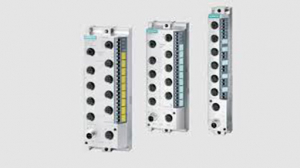
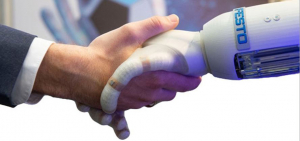
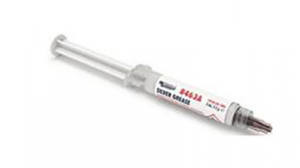
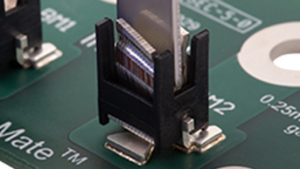







Write a comment
No comments